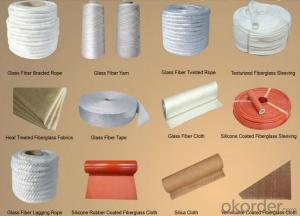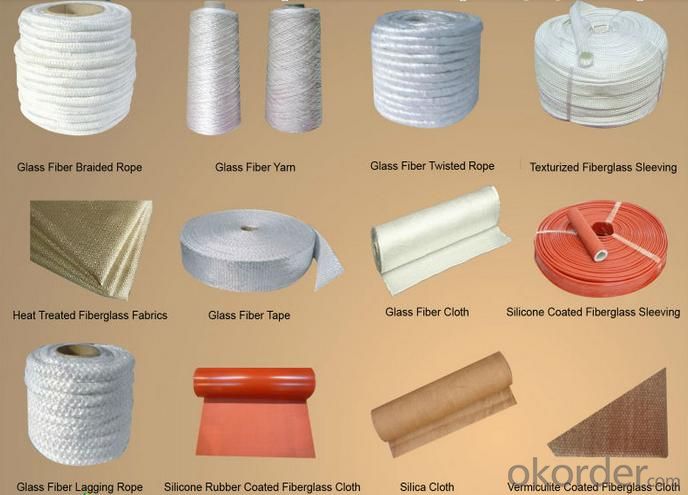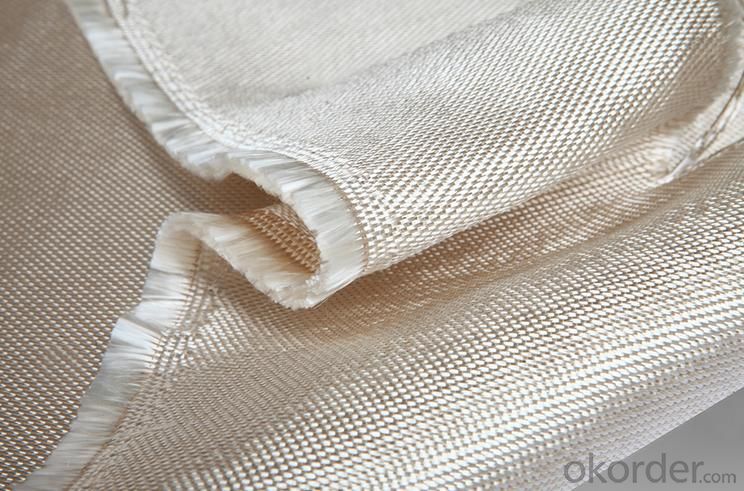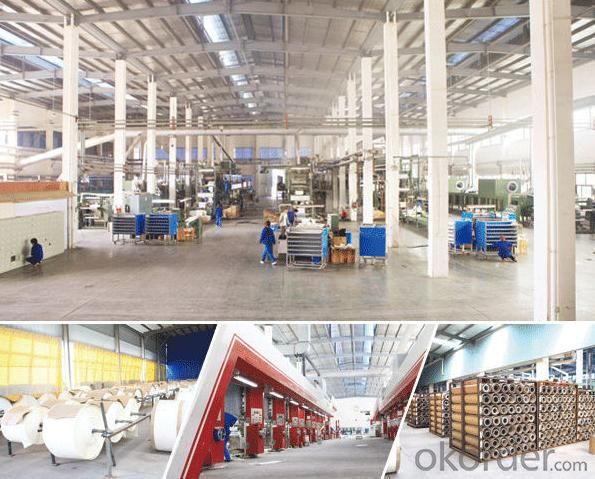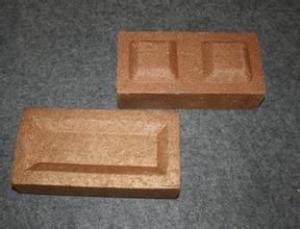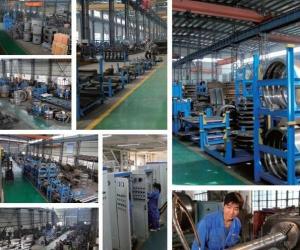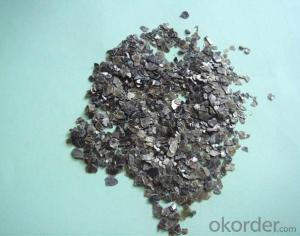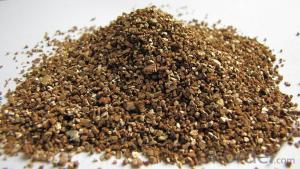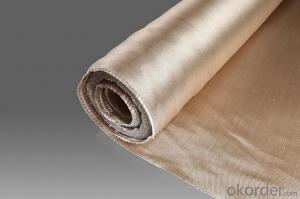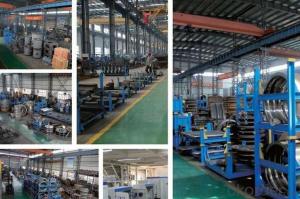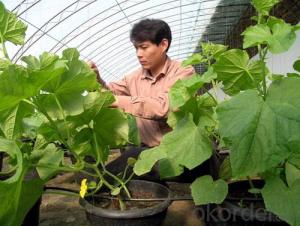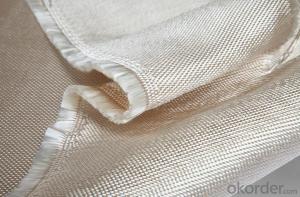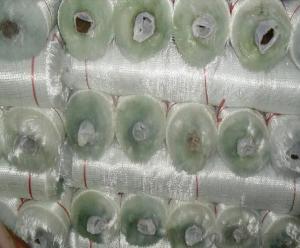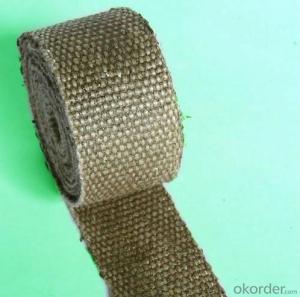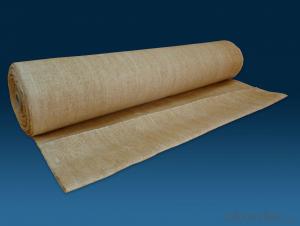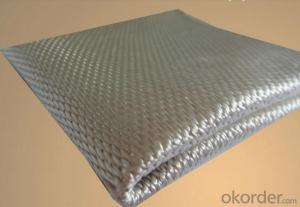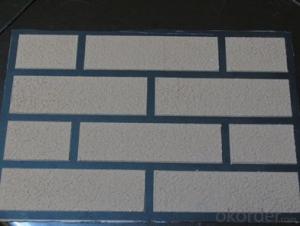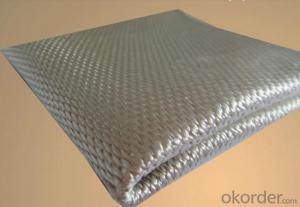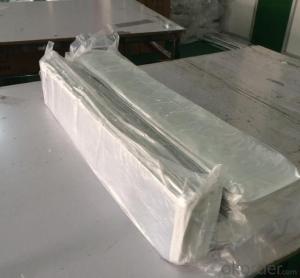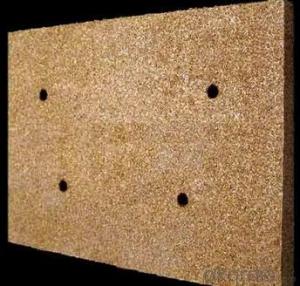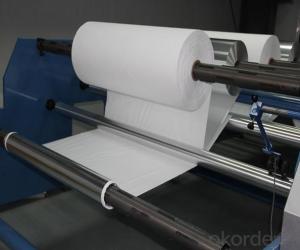Gold Vermiculite Coated Fiber Glass Fabric Cloth
- Loading Port:
- Tianjin
- Payment Terms:
- TT OR LC
- Min Order Qty:
- 1000 m²
- Supply Capability:
- 100000 m²/month
OKorder Service Pledge
OKorder Financial Service
You Might Also Like
Specification of Gold Vermiculite Coated Fiber Glass Fabric Cloth:
Vermiculite Coated Fiberglass Fabric with Stainless Steel Wire Enhancing type is made of high temperature resistant and intensity 9 micron E glass filament texturized yarns with high quality stainless steel wire as enhancing material by special technique. The glass yarns are assembled and textured by passing through high pressure air jet machine into a soft yarn with outstanding insulation properties. These yarns are then intensely woven into a soft, durable and flexible fabric that can be readily treated or coated to further enhance its properties. Textured fiberglass fabric or cloth is available for supply without coating or treatment by Pasia. Vermiculite coated glass fabrics are tough, durable and resist metal splash and welding spatter. Vermiculite coated glass fabrics are capable of withstanding temperatures of 1000℃ for short periods and make functions as an ideal material for fire barriers and welding curtains.
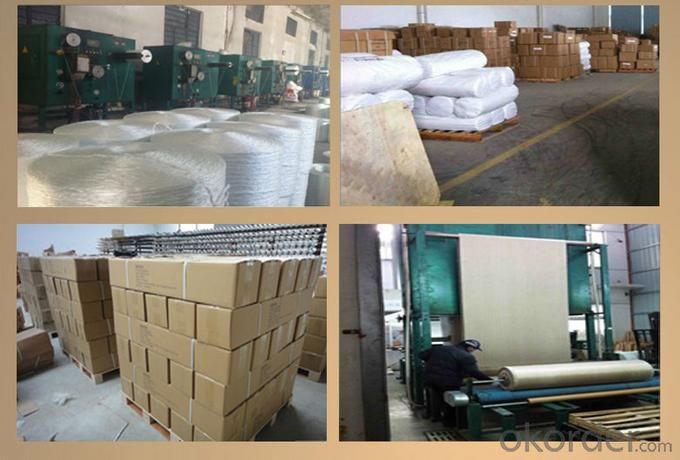
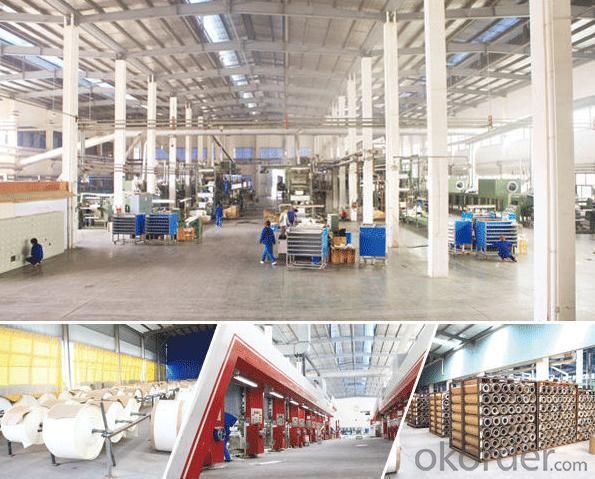
Main Features of Gold Vermiculite Coated Fiber Glass Fabric Cloth:
It could be used under the temperature of 70-1000℃, also it could resists transient high temperature;
It resists ozone, oxygen, light seasoning and climate seasoning;
High intensity, high module, low shrinkage, non-heteromorphy;
When the temperature exceeds its working temperature, it still has lingering intensity.
Flame resistant, good ability of insulating heat and holding temperature;
High intensity;
Corrosion resistant;
Main application:
Fiberglass fabric of expanding-volume yarn has great capability and it is widely used in such fields as steel-iron, electric energy, metallurgy, chemical industry, environment protection, cement, etc. It is suitable to use as enhancing material with high request on mechanical capacity and for body protecting, e.g. generator system, soft joint of boiler and chimney, heat insulation of engine room, production of fireproofing curtain. This product is also used for system expiating of exhaust, air exchange, breathe, disposal of dust, exhaust gas; all kinds of coated basal fabric, temperature holding of boiler, pipeline knotting, etc.
Technical Data of Gold Vermiculite Coated Fiber Glass Fabric Cloth:
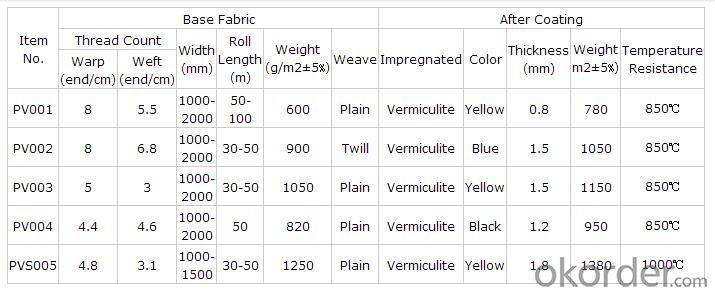
- Q: I‘ve been starting plants from seed in my room. They‘ll sprout fine and healthy, but sometimes they start to wither and die.
- i'm happy to verify you're consistent. shop up the combat, seedlings are hard to grasp. i think of one component you may ought to kick back on is the watering. make certain you're no longer watering time-honored. maximum vegetation ought to have a dry era. in case you have shallow soil, try another day or each 0.33 day. I even have made the blunders myself with watering too lots. It seems such as you're planting greens (cucumbers, beans, tomatoes)? merely shop attempting and don't provide up.
- Q: Can vermiculite fertilize any seed?
- use vermiculite. do some research, theres tons out there on incubating dragon eggs.
- Q: Hi the angle of the cracks formed is almost constant and is about 45 degree(not sure). can you please tell me the exact reason for that?please I need the answer uurgently
- Vertisols have high amounts (30%) shrink and swell clays (2:1) such as vermiculites and smectites. The shrink and swell characteristics are responsible for the opening and closing of the cracks in the soil depending on the moisture. These soils crack on the shear planes, when the hydration of clays exceed the shear strength from a range of 10-60 degrees above the horizontal. Not always 45 degrees. hope this helps. Soil and water scientist
- Q: Should I add bagged manure to my potting soil when I plant tomatoes?
- Potting soil is primarily peat moss with composted bark and perlite and sometimes vermiculite and sand. It has no nutritional value, although some do contain small amounts of regular or slow release fertilizer. Its primary attributes are its acid pH and resistance to plant pathogens. So, yes you can add bagged manure to the potting soil. However, the average amount of the 3 main plant nutrients found in cattle manure is rather small— 0.6N, 0.2P, 0.5K. Its main value is in stimulating beneficial bacteria growth in soil and thereby unlocking some nutrients. In addition to the main 3 there are a host of secondary and micro nutrients that are important to tomatoes. For instance, lack of calcium can cause blossom end rot. I suggest you add a fully balanced fertilizer or combination of fertilizers that address all the nutrient needs of tomatoes.
- Q: If you have used this method, please share ideas.I‘ve read in some previous questions that you may have to tweak the soil mix, (peat, vermiculite, compost) but I‘m not clear as to what changes would have to be made.We installed the system last year, so this is our second summer. The plants seem to dry out and the veggies aren‘t very big and seem leathery. Is this just a water-retention problem, or did we get bad compost? Last year the compost wasn‘t the greatest, so this year we added lots of what I thought was a high-quality one, but our results aren‘t much better than last year. Do you think adding in some water-retaining crystals would help, or is there something else we could do to get this to work better for us? We live in Utah, so we have some annoying challenges, short growing season, very hot dry summers, possibility of late and early frosts.We‘ve also found that mice just love to dig up the fluffy soil, and also chew on the produce. Thanks for reading my whole question, and thanks for your input!
- I've made the square-foot method work, but I'm in a much less arid part of the country (NJ) than you are. Are you using the new revised method which doesn't use very deep soil? Those can dry out very fast. Try going to a deeper bed, with a good thick layer of mulch on top to prevent water loss. A drip irrigation system would also help if you can manage one. For the best compost, make your own - the more variety in the material you put in the compost bin, the more nutritious the resulting compost will be. Even if you don't make enough and have to supplement with purchased compost, whatever homemade you can make will be an improvement. Also, if you have trees on your property, save the needles and leaves for mulch or making compost or leaf mold. For the mice, I suggest a cat. Or get some used kitty litter from a friend who has a cat and put it around the garden. The biodegradable kind is best.
- Q: my 4in male turtle is always doing the mating dance and the female(5-6in) sometimes looks or jus pushes away or bites the males claws wht shall i doand the other thing is that when will the mate it bin weeksssssss of the mating dance and no matingwht going on here and the female sometimes look intrest of him and then she jus push him away later plz help the faster the better and ty soo much 4 helping
- Perhaps your 40 gallon tank is not suitable for her to nest. I have never heard of turtles nesting in an aquarium. In my experience the always nested in sand or a pile of dead leaves and such. The insufficient space could be why she is rejecting the male. Edit: 10 or 28 gallons? If a 40 gallon isn't enough then 10 or 28 is clearly not enough. Turtles need space. They usually are not very social depending on species but majority of the time they are all solitary reptiles. They come together to mate basically. All reptiles are cold blooded and like to bask in the sun, but that doesn't mean they need or want full sunlight all the time. They need someplace to hide as they are solitary. They need water to dive in so they can cool off. The female finds a suitable place to nest. The aquarium needs to have a suitable place. In a 10 or 28 gallon tank there is no way to have what is required for space or nesting. They need a pond type environment with a sandy area out of water where they can bask, mate and nest.
- Q: I am closing on my first home next Monday and we have been in discussion with the seller, a 3rd party bank, about who should pay for removal of asbestos found during the inspection. The vermiculite insulation was found in the eaves on the 2nd floor and inbetween the drywall and studs on that floor as well. There is also floor tile that is said to contain asbestos mastic. I received 4 quotes to remove this, all which came in right around $12,000. The bank has offered us $7,000 to put toward the removal. We are going to forgo removing the tiles and just cover them with carpet. Can anyone tell me if they have been through a similar situation and if it was worth it? Should I walk away if they won‘t pay the full $12,000? I am told the tiles are not a danger to my family‘s health and are in all schools.
- NO motorcycle license are for the highway DIRTBIKES are for fun in the dirt
- Q: Where to get water dragon tank sizeand how to influence parents to let you get one and anything else you think will help you get best answer
- I have driven since 1973. owned thirty cars. Not once have I ever heard of changing brake fluid. I have done a dozen brake jobs on my cars over the years. never changed brake fluid. I think your misinformed big time.
- Q: I'm mixing water and vermiculite for an incubation medium for gecko eggs. The ration is six parts vermiculite by weight and 4 parts water by weight. If the vermiculite is 25.1 grams what should the water be? Also can I see your equation you used for future reference?Thanks for your time
- You left out some steps. You should mix the water, vermiculite and brown rice flour(ground brown rice) and place it in a jar and place the jar in boiling water or pressure cooker. Generally they are mixed together in the right ratio. One part brown rice flower, one part water and two parts vermiculite is the recommended ratio. Mix the water and vermiculite first. Then add brown rice flour. Place it half way full in a jar and cover it tightly with aluminum foil. Boil it for 20 minutes being careful that the water level is low enough that it doesn't get into the jars. Pressure cooking is better but not necessary. Let it cool down. Inject the spores. After a week or so it should start turning white. At some point you need to put it in a fruiting chamber. I would probably do that at about 2 weeks or when the mycelium had established itself. It needs to be exposed to light or mushrooms won't form. Mushrooms also generally need more ventilation at that point.
- Q: can worms live in soil with the small little white crums in it?
- If you are talking about potting soil, with the white vermiculite crumbs, the answer is not for long. That soil is sterilized, and contains no organic matter to break down, which is what worms need for food. You will need to regularily add food scraps to it, to start breaking down and give them food.
Send your message to us
Gold Vermiculite Coated Fiber Glass Fabric Cloth
- Loading Port:
- Tianjin
- Payment Terms:
- TT OR LC
- Min Order Qty:
- 1000 m²
- Supply Capability:
- 100000 m²/month
OKorder Service Pledge
OKorder Financial Service
Similar products
Hot products
Hot Searches
Related keywords
